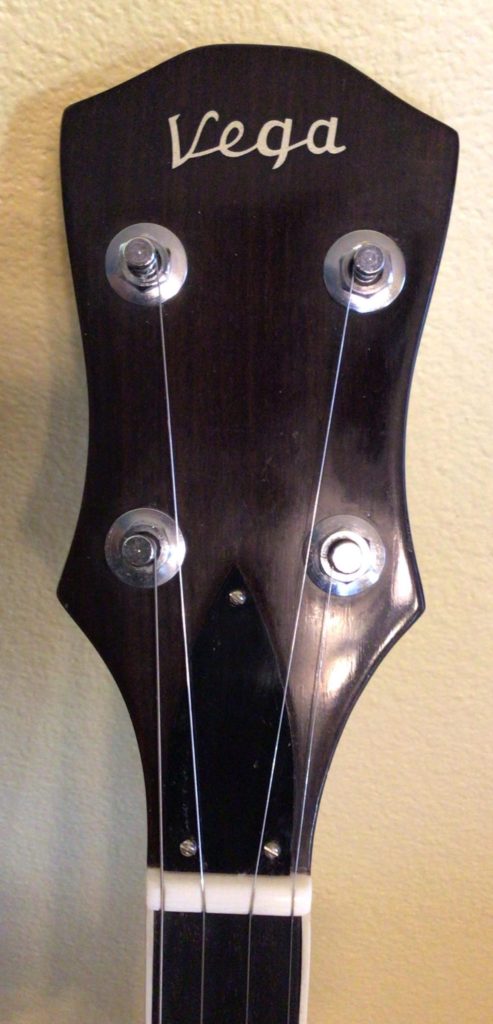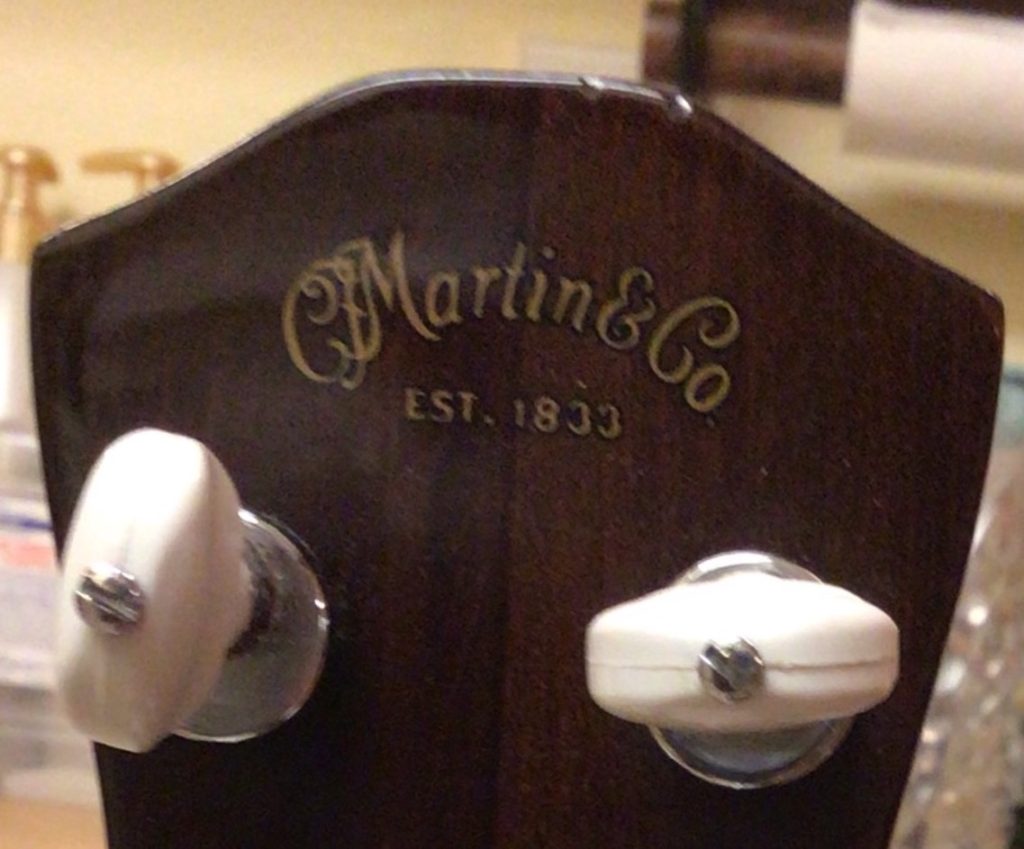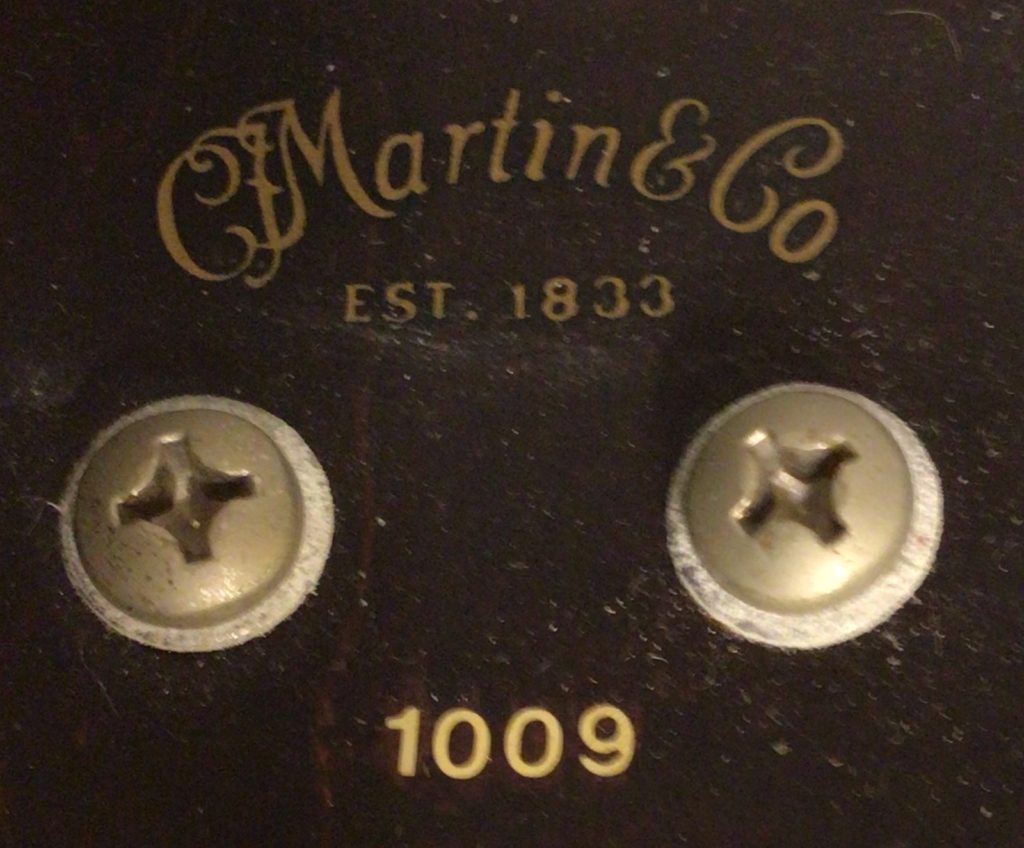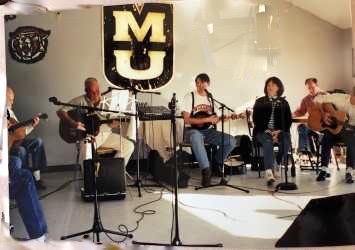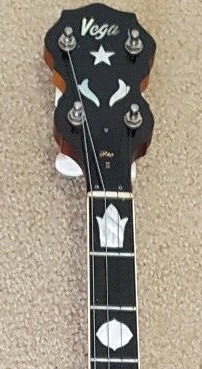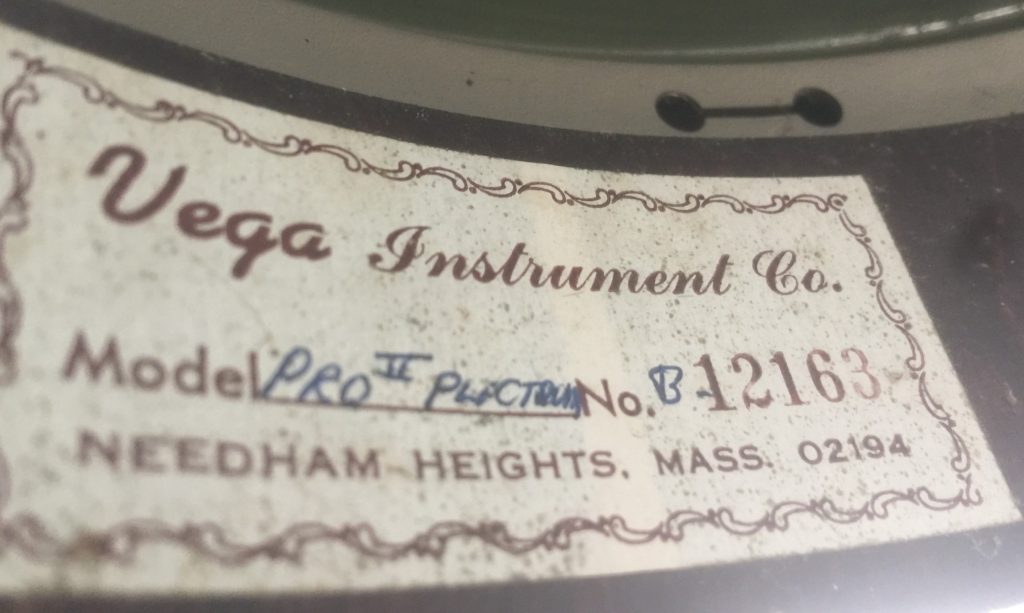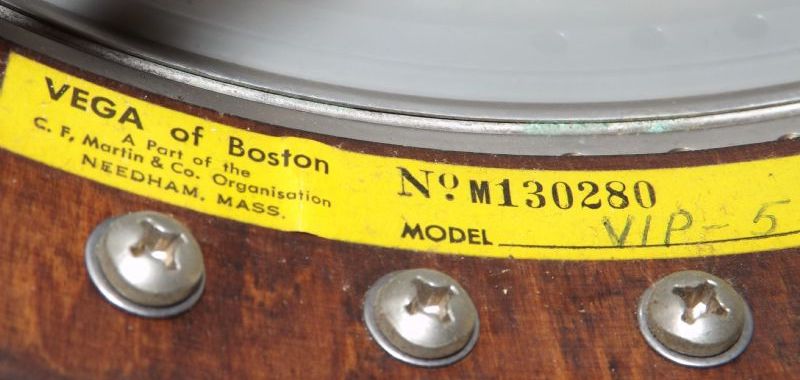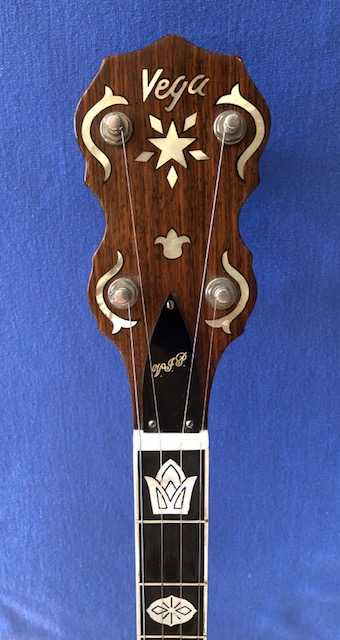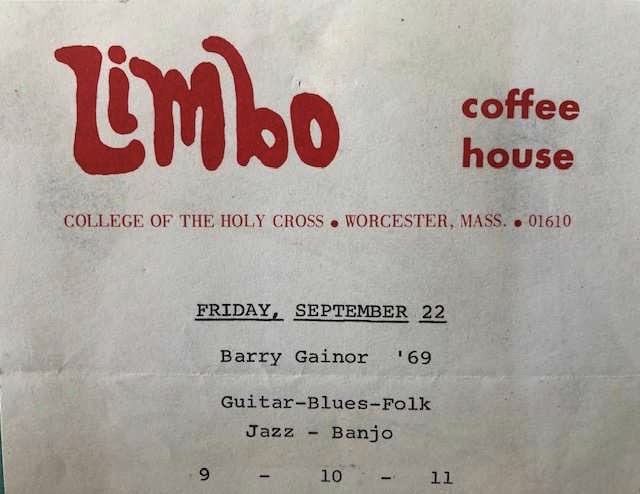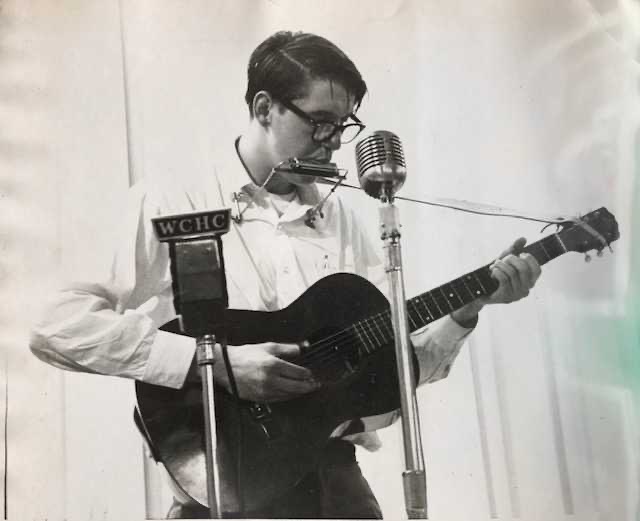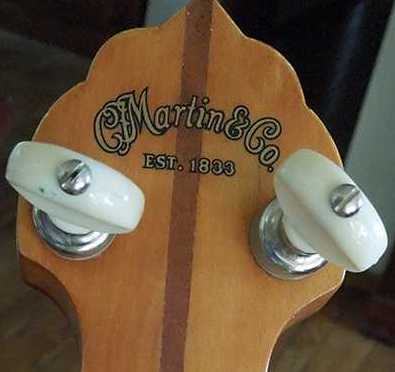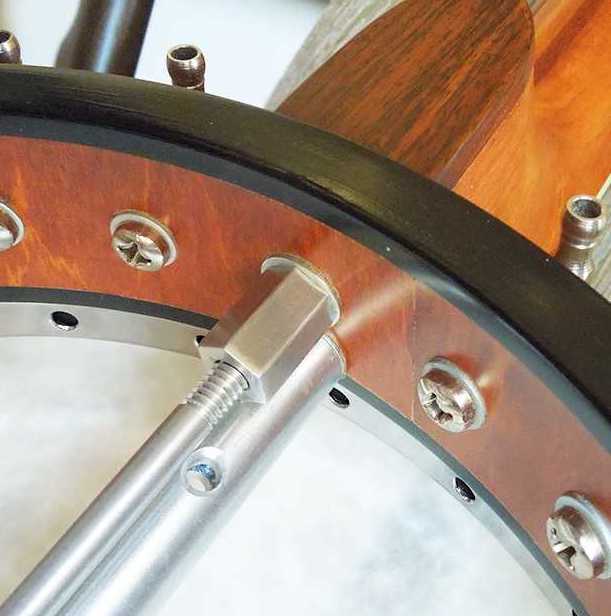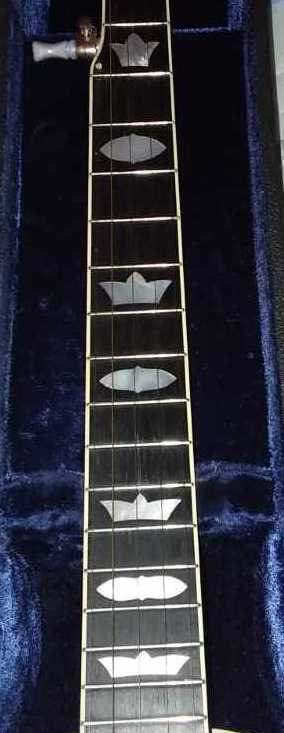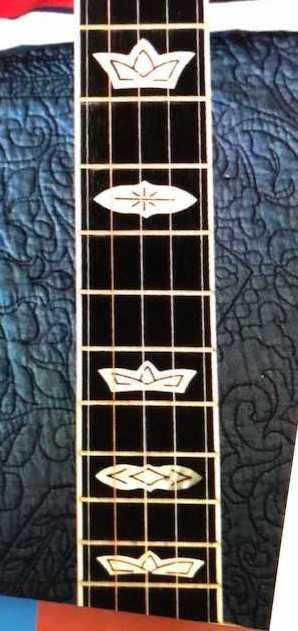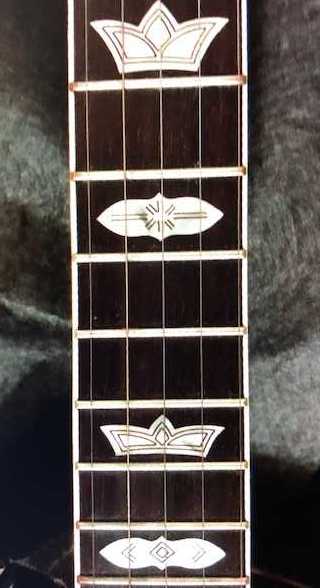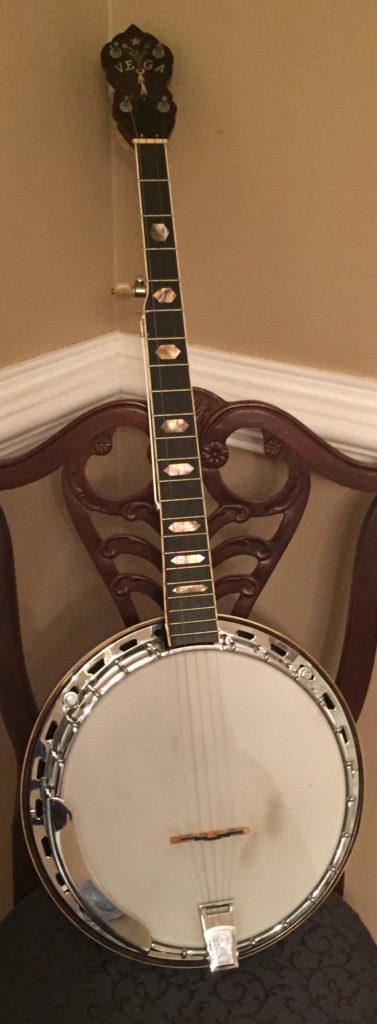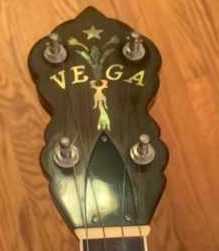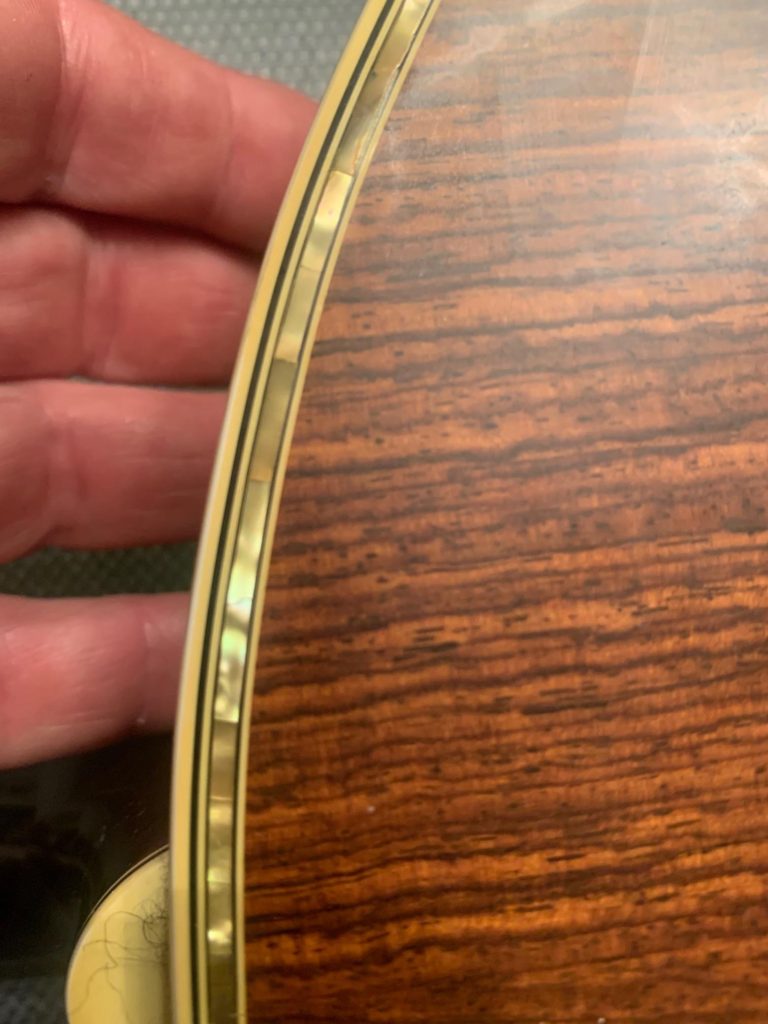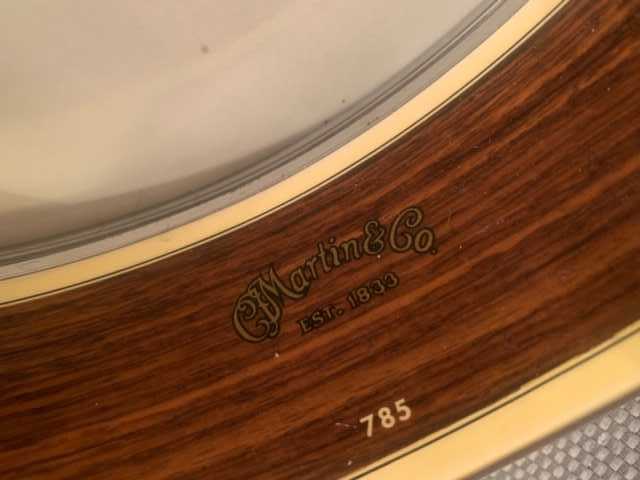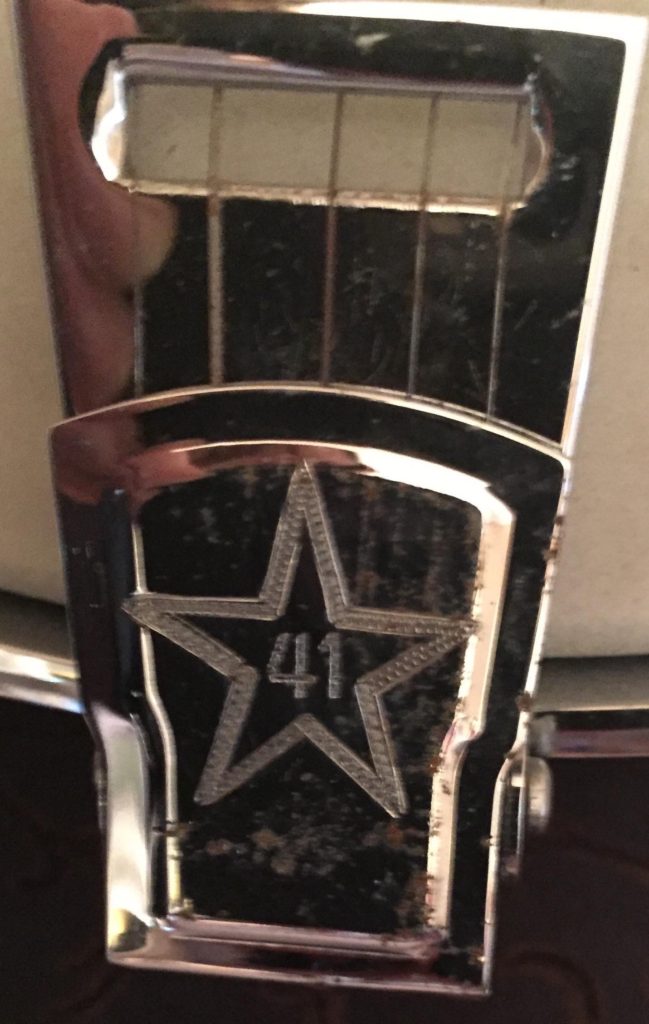From the BRC Mailbox:
Dear G.G.
Thank you for the prompt and detailed photos of your Vega Martin Wonder banjo (Model VW-5 or sometimes Wonder-5) with serial number 1009. This instrument was manufactured in Nazareth, PA, per Workshop Order #2213 in mid 1974. It features a metal tone ring, white fingerboard binding, a 10 ply rim, a 3-piece maple neck, pearl dots, a resonator with 4 section flanges, nickel-plated metal parts, and a shady mahogany finish. The suggested retail cost in the 1971 Vega Martin price list was $345 without case. The Wonder banjo line included a plectrum and tenor model in addition to the 5-stringer.
In its early Boston beginnings, the Wonder banjo was an entry level instrument that featured a mahogany neck, rosewood fingerboard, a 5 ply maple rim, a metal tone rim, and resonator as described in a 1961 Vega flyer. It sold for $195 back then. In the 1963 Vega catalogue, the Wonder was converted to a maple neck, with a blackwood fingerboard, and a 5 ply rim. Vega introduced its cousin the open-black “Folk Wonder” model (FW-5) in 1966. In the 1968 Vega catalogue, the Wonder line was upgraded with a 10 ply rim. C. F. Martin purchased the Vega brand in 1970, and the Wonder resonator banjo remained unchanged as did its less popular cousin the open back FW-5 model of which only 124 were made in Nazareth. Both the resonator and open back models appeared in the 1972 Martin catalogue, but the folk style FW-5 production ended in 1976. It is absent from the catalogue of that year. In the 1976 Vega Martin catalogue, the resonator VW-5 instrument was upscaled with a brass tone ring and ebony fingerboard..
The Martin Company sold the Vega brand overseas to the Galaxy Conglomerate in 1979. Vega banjos were then marketed in the US by TMC (Targ & Dinner 20 Century Music Conglomerate), but a version of the Wonder line was not advertised in their catalogue. Galaxy went bankrupt in a few years, and the Vega brand was rescued in 1989 by Greg Deering who revitalized the Vega legacy. The Deering Company revived the Vega tradition of the open back Wonder line of 5-stringers with a nostalgic “Little Wonder” model of yesteryear and a special “Old Time Wonder” banjo for clawhammer enthusiasts.
Thanks for your query to the BRC Mailbox. Be safe, be well, and keep on picking. Barry

